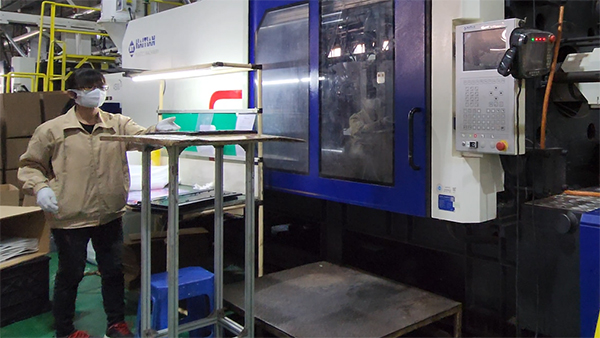In the injection molding process, gas interference often causes defects like silver streaks, tiny bubbles on the surface, or internal bubbles in thick-walled sections. These gases mainly originate from moisture, volatile substances, or excess lubricants in the raw material. Additionally, high material temperature, prolonged heating, or poor ventilation can lead to material degradation, producing harmful gases. Below are ways to address these issues:
- Equipment Optimization
The design and condition of the equipment significantly affect the molding process. A small nozzle can cause material drooling or stringing, and obstructions in the barrel or nozzle generate friction heat at high speeds, causing material degradation. Regular equipment inspections are essential to ensure the equipment is clean and free of blockages to prevent material breakdown due to excessive friction. - Mold Design Improvements
Mold defects are another common cause of gas-related issues. Improper gate positioning or small gate size can disrupt the material flow, especially in multi-gate molds with asymmetrical gate layouts, leading to incomplete air discharge. An imbalanced mold temperature caused by an inefficient cooling system can also affect material flow. Ensuring parting lines have sufficient vent channels, and using vents, inserts, or ejector pins to aid gas release, is crucial. Inadequate, blocked, or poorly positioned vents can trap air, resulting in surface defects. Additionally, a rough mold surface increases friction, creating localized hot spots that degrade the plastic and cause defects.
By optimizing equipment, improving mold design, and ensuring proper ventilation, manufacturers can reduce gas-related defects and improve the surface quality of injection-molded products.

3. Process Optimization
The setting of process parameters is also critical. Excessively high material temperature can cause plastic degradation, and if the barrel temperature is too high or unevenly heated, it should be gradually reduced. If the temperature of the feeding section is too high, part of the plastic may melt prematurely, filling the screw grooves and preventing air from escaping through the feed port.
Control of injection speed is equally important. If the injection speed is too fast, the molten plastic may undergo excessive shear, leading to decomposition and the generation of gases. On the other hand, too slow an injection speed can prevent the cavity from being filled in time, resulting in insufficient surface density and the appearance of silver streaks.
Using a multi-stage injection process can effectively reduce silver streaks:
- Inject at a moderate speed to fill the runner.
- Slow down to fill the gate.
- Quickly inject to fill the cavity.
- Use low pressure and slow speed to ensure the mold is filled and air is expelled at each stage.
DAYIN Plastic Products Co., Ltd. has 30 years of experience in mold manufacturing. As an OEM/ODM injection molding service provider, we offer one-stop services and specialize in product structure optimization to reduce molding costs. Our comprehensive product design and manufacturing team provides high-quality design services. With advanced mold processing equipment, a 50,000-square-meter production base, over 50 R&D personnel, and more than 100 injection molding machines, we are committed to delivering premium manufacturing services for various plastic products.
